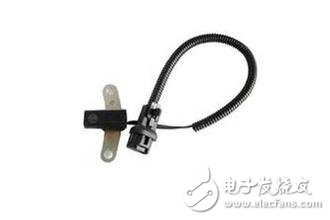With the development of automotive decoder electronic technology, the degree of automotive electronic interference engineering has been continuously improved. The conventional mechanical system has been difficult to solve some decoding problems related to automotive functional requirements, and has been replaced by electronic control systems. The function of the sensor is to quantify the component that provides a useful electrical output signal according to the specified measured size, that is, the transducer that converts the physical and chemical quantities of light, time, electricity, temperature, pressure, and gas into signals. As a key component of the automotive electronic control system, the sensor directly affects the technical performance of the car. There are about 10-20 sensors on the average car and more in the luxury limousine. These sensors are mainly distributed in the engine control system, chassis control system and body control system.
First, the engine control sensor
There are many types of sensors for engine control, including temperature sensors, pressure sensors, speed and angle sensors, flow sensors, position sensors, gas concentration sensors, knock sensors, and the like. These sensors are the core of the entire engine, which can improve engine power, reduce fuel consumption, reduce exhaust gas, reflect faults, etc. Because they work in harsh environments such as engine vibration, gasoline vapor, sludge and muddy water, they are resistant to harsh conditions. Environmental technology indicators are higher than the average sensor. There are many requirements for their performance indicators, the most critical of which is measurement accuracy and reliability, otherwise the error caused by sensor detection will eventually lead to engine control system failure or failure.

1. Temperature sensor: mainly detects engine temperature, suction gas temperature, cooling water temperature, fuel temperature, oil temperature, catalytic temperature, etc. The practical temperature sensors are mainly wired, resistive, thermistor and thermocouple. The wirewound resistance temperature sensor has high precision, but the response characteristics are poor. The thermistor sensor has high sensitivity and good response characteristics, but the linearity is poor, and the applicable temperature is low. The thermocouple type has high precision and wide temperature range, but it needs Consider amplifier and cold junction handling issues.
2. Pressure sensor: mainly detects the absolute pressure of the intake manifold, vacuum, atmospheric pressure, engine oil pressure, brake oil pressure, tire pressure and so on. There are several types of pressure sensors for vehicles. There are capacitive, varistor, diaphragm-driven variable inductance (LVDT) and surface elastic wave (SAW). Capacitive sensors have the characteristics of high input energy, good dynamic response and good environmental adaptability. The varistor type is affected by temperature, and a temperature compensation circuit is required, but it is suitable for mass production; LVDT type has large output and is easy to digital. Output, but the vibration resistance is poor; SAW type is a kind of ideal sensor with small size, light weight, low power consumption, high reliability, high sensitivity, high resolution and digital output.
3. Speed, angle and vehicle speed sensor: mainly used to detect crank angle, engine speed, vehicle speed and so on. There are mainly generator type, magnetoresistive type, Hall effect type, optical type, vibrating type and the like.
4. Oxygen sensor: The oxygen sensor is installed in the exhaust pipe, measures the oxygen content in the exhaust pipe, determines the deviation between the actual air-fuel ratio of the engine and the theoretical value, and the control system adjusts the concentration of the combustible mixture according to the feedback signal, making it empty. The fuel ratio is close to the theoretical value, thereby improving economy and reducing exhaust pollution. Practical applications are zirconia and titanium oxide sensors.
5. Flow sensor: Determine the air intake and fuel flow to control the air-fuel ratio, mainly air flow sensor and fuel flow sensor. The air flow sensor detects the amount of air entering the engine to control the fuel injection amount of the injector to obtain a more accurate air-fuel ratio. The practical application includes a card door vortex type, a vane type, and a hot line type. The Carmen type has no moving parts, is sensitive and has high precision; the hot wire type is susceptible to the pulsation of the suction gas and is easy to break; the fuel flow sensor is used to determine the fuel consumption. There are mainly waterwheel type and ball circulation type.
6. Knock sensor: It can transmit the knock signal to the control system to suppress the occurrence of knock. There are mainly magnetostrictive and non-resonant piezoelectric types.
Zoom Camera , Thermal Camera ,Drone searching Light, Drone Mega Phone,Drone Survey Gimbals
Zoom Camera, Thermal Camera,Drone searching Light, Drone Mega Phone,Drone Survey Gimbals
shenzhen GC Electronics Co.,Ltd. , https://www.jmrdrone.com
![<?echo $_SERVER['SERVER_NAME'];?>](/template/twentyseventeen/skin/images/header.jpg)